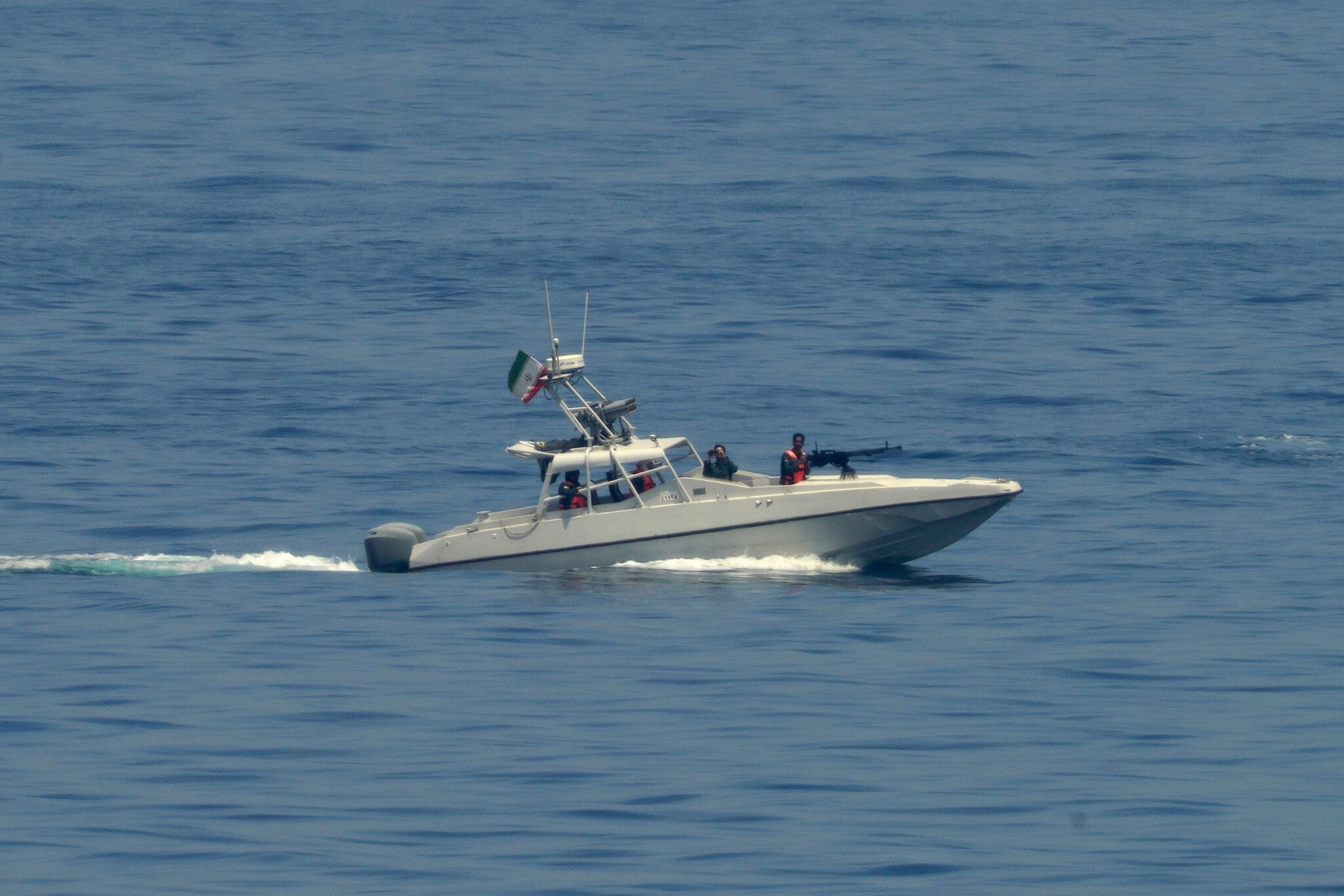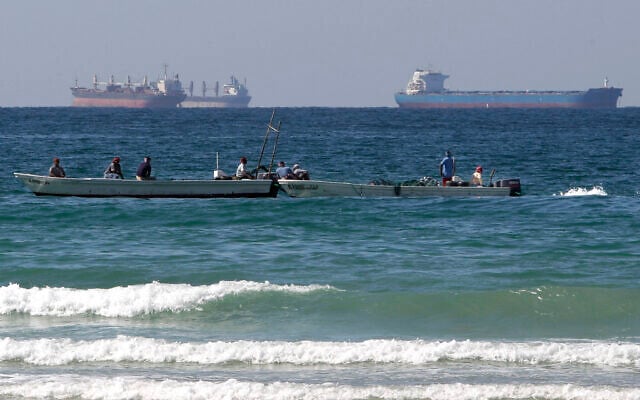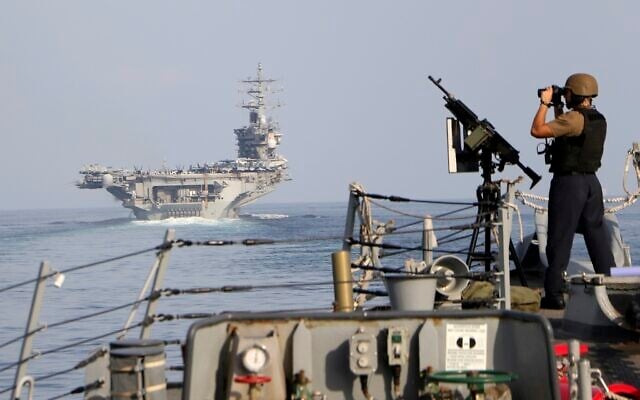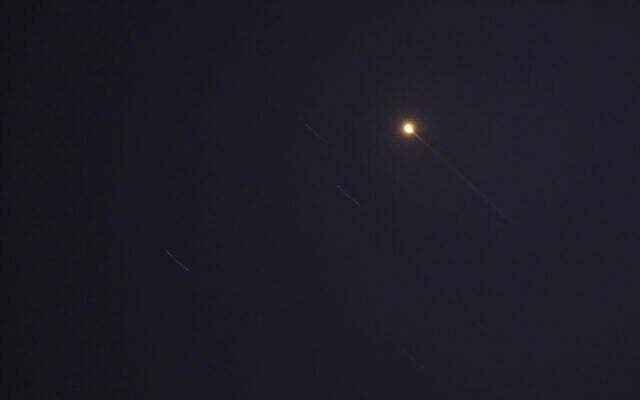



WASHINGTON (Reuters) – The Iranian military loaded naval mines onto vessels in the Persian Gulf last month, a move that intensified concerns in Washington that Tehran was gearing up to blockade the Strait of Hormuz following Israel’s strikes on sites across Iran, according to two US officials.
The previously unreported preparations, which were detected by US intelligence, occurred some time after Israel launched its initial attacks against Iran’s nuclear and missile infrastructure on June 13, said the officials, who requested anonymity to discuss sensitive intelligence matters.
The loading of the mines – which have not been deployed in the strait – suggests that Tehran may have been serious about closing one of the world’s busiest shipping lanes, a move that would have escalated an already-spiraling conflict and severely hobbled global commerce.
About one-fifth of global oil and gas shipments pass through the Strait of Hormuz and a blockage would likely have spiked world energy prices.
Global benchmark oil prices LCOc1 have instead fallen more than 10 percent since the United States strikes on Iran’s nuclear facilities, driven in part by relief that the conflict did not trigger significant disruptions in the oil trade.
On June 22, shortly after the US bombed three of Iran’s key nuclear sites in a bid to cripple Tehran’s nuclear program, Iran’s parliament reportedly backed a measure to block the strait.
That decision was not binding, and it was up to Iran’s Supreme National Security Council to make a final decision on the closure, Iran’s Press TV said at the time. Iran has over the years threatened to close the strait but has never followed through on that threat.
Reuters was not able to determine precisely when during the Israel-Iran air war Tehran loaded the mines, which – if deployed – would have effectively stopped ships from moving through the key thoroughfare.
It is also unclear if the mines have since been unloaded.
The sources did not disclose how the United States determined that the mines had been put on the Iranian vessels, but such intelligence is typically gathered through satellite imagery, clandestine human sources or a combination of both methods.
Asked for comment about Iran’s preparations, a White House official said: “Thanks to the President’s brilliant execution of Operation Midnight Hammer, successful campaign against the Houthis, and maximum pressure campaign, the Strait of Hormuz remains open, freedom of navigation has been restored, and Iran has been significantly weakened.”
The Pentagon did not immediately respond to a request for comment. The Iranian mission at the United Nations also did not respond to requests for comment.
The two officials said the US government has not ruled out the possibility that loading the mines was a ruse. The Iranians could have prepared the mines to convince Washington that Tehran was serious about closing the strait, but without intending to do so, the officials said.
Iran’s military could have also simply been making necessary preparations in the event that Iran’s leaders gave the order.
The Strait of Hormuz lies between Oman and Iran and links the Persian Gulf with the Gulf of Oman to the south and the Arabian Sea beyond.
It is 21 miles (34 km) wide at its narrowest point, with the shipping lane just 2 miles wide in either direction.
OPEC members Saudi Arabia, the United Arab Emirates, Kuwait and Iraq export most of their crude via the strait, mainly to Asia. Qatar, among the world’s biggest liquefied natural gas exporters, sends almost all of its LNG through the strait.
Iran also exports most of its crude through the passage, which in theory limits Tehran’s appetite to shut the strait. But Tehran has nonetheless dedicated significant resources to making sure it can do so if it deems necessary.
As of 2019, Iran maintained more than 5,000 naval mines, which could be rapidly deployed with the help of small, high-speed boats, the US Defense Intelligence Agency estimated at the time.
The US Fifth Fleet, which is based in Bahrain, is charged with protecting commerce in the region. The US Navy has typically kept four mine countermeasure vessels, or MCM vessels, in Bahrain, though those ships are being replaced by another type of vessel called a littoral combat ship, or LCS, which also has anti-mine capabilities.
All anti-mine ships had been temporarily removed from Bahrain in the days leading up to the US strikes on Iran in anticipation of a potential retaliatory attack on Fifth Fleet headquarters.
Ultimately, Iran’s immediate retaliation was limited to a missile attack on a US military base in nearby Qatar.
US officials, however, have not ruled out further retaliatory measures by Iran.
Israel began its sweeping assault on Iran’s top military leaders, nuclear scientists, uranium enrichment sites, and ballistic missile program on June 13 with the aim of preventing the Islamic Republic from acquiring nuclear weapons and amassing long-range weapons.
Iran retaliated to Israel’s strikes by launching over 500 ballistic missiles and around 1,100 drones at Israel. The attacks killed 28 people, all but one of them civilians, and wounded over 3,000 in Israel, according to health officials and hospitals. In all, there were 36 missile impacts and one drone strike in populated areas, causing damage to 2,305 homes in 240 buildings, along with two universities and a hospital, and leaving over 13,000 Israelis displaced.
A ceasefire between the two countries went into effect on June 24, shortly after the US joined the campaign with a strike on Iran’s nuclear enrichment centers, including the underground facility at Fordo.
Times of Israel staff contributed to this report.



